Europe’s rivers have shaped everything from its landscape to its history. They have been a focal point for human settlement, with major cities such as London, Paris, and Berlin located on their banks. They’re a habitat for wildlife and part of the physical environment of Europe, carving out valleys and canyons, creating islands, and forming borders between countries.
Nowhere is this multifarious reach more evident than with Europe’s longest rivers. From providing water for drinking and irrigation, opening up trade routes, to being a means of transportation, these waterways have been multitasking for centuries. These roles are sustained today, and along with them new ones have developed. For example as a source of renewable energy by powering hydroelectric dams. In short, their importance cannot be overstated.
So what are the longest rivers in Europe? And what is the widest river in Europe? We’re exploring them all, starting with the very largest river in Europe.
1. Volga

A ship on the Volga River ( Photo: Westend61 via Getty Images)
Length: 2,290 miles
Flowing for an astonishing 2,290 miles, the Volga River is the largest river in Europe, and the most important river in Russia. It’s become something of a national symbol, playing a vital role in the country’s economy and transportation, as well as Russian culture and history. For centuries, the river has been a key part of the Russian people’s way of life. It has been a major trade route since ancient times and was even mentioned by second century writer and geographer Claudius Ptolemy.
From its source in the Valdai Hills where it sits almost 750 feet above sea level, the Volga travels south. By the time it discharges into the Caspian Sea, its elevation drops to 92 feet below sea level. Along the way, the river travels through more than ten cities, the largest being Kazan. All in all, its basin spans an area of some 533,000 square miles, which is not only larger than the nation of Peru but is also home to more than half of Russia’s population.
2. Danube River
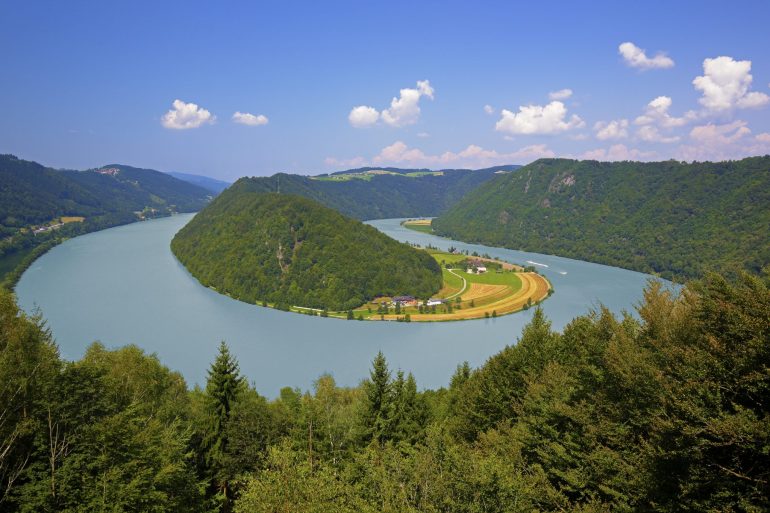
The Danube River (Photo: Walter Geiersperger via Getty Images)
Length: 1,780 miles
Rising in Donaueschingen in Germany’s Black Forest, the Danube flows southeast for over 1,700 miles to its mouth at the Black Sea, making it the second longest river in Europe. Although pipped to the top in terms of size, its basin is regarded as the most internationally diverse in the world, making it popular as a cruise route. Its catchment takes in a total area of 309,000 square miles, over 80 million people, four capitals and 19 countries. It runs through ten of these nations, including Austria, Bulgaria, Croatia, Germany, Hungary, Moldova, Serbia, Slovakia, and Ukraine. The longest run however is through Romania.
It is hard to overestimate the role of the Danube in European history and development. It has served as everything from the border of empires and a battleground, to a trade route and transportation hub. It provides power and water to this day. From an ecological perspective, the river and its banks are home to around 5,000 animal species and 2,000 plant types. Of the 26 known types of sturgeon, six call the Danube home.
3. Ural
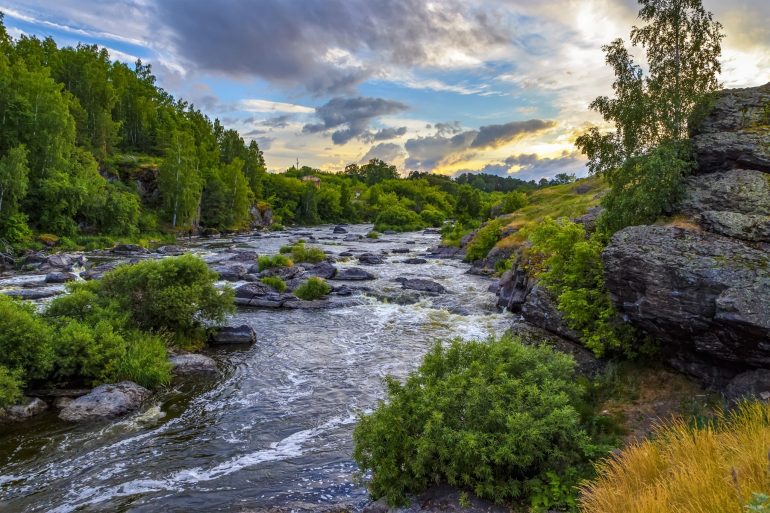
Ural mountains and river (Photo: tsolara via Getty Images)
Length: 1,509 miles
The Ural has its source near Mount Kruglaya in the southern Ural Mountains and, like the Volga, discharges into the Caspian Sea. This route, which exceeds 1,500 miles, takes it through Russia and Kazakhstan and makes it the third longest river in Europe. Traditionally, the Ural has also been seen as part of the continental border between Europe and Asia.
The river is home to a diverse array of plant and animal life, supporting almost 500 vertebrate species. It has also been cited as the only free-flowing river in the Caspian basin and the home of the only sturgeon population able to naturally reproduce.
The Ural River is also a popular destination for outdoor recreation, with many opportunities for swimming, fishing, and boating.
4. Dnieper

Dnieper river bank (Photo: Artem Hvozdkov via Getty Images)
Length: 1,420 miles
The Dnieper River is one of the major rivers of Europe, rising in the Valdai Hills in Russia and flowing through Belarus and Ukraine to its mouth on the Black Sea. It is also the longest river in Ukraine. The Dnieper has a length of 1,420 miles and a basin area of 194,000 square miles.
The Dnieper is an important waterway for both freight and passenger traffic. It’s navigable for large ships from its mouth to the city of Kiev, where it connects with the system of canals and rivers that form the Volga–Don Waterway. The Dnieper is also a popular route for tourist cruises. In terms of wildlife, pike, roach and carp are just three of the sixty species of fish that swim the Dnieper.
5. Don
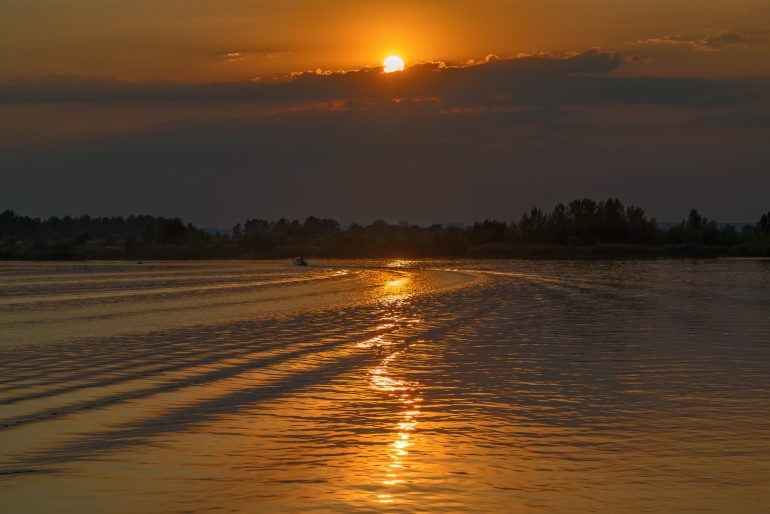
River Don at sunset (Photo: Alexey Beskopylnii via Getty Images)
Length: 1,210 miles
With the Volga to its east and Dnieper to the west, the Don River flows for around 1,200 miles until finally reaching its end at the Sea of Azov. Europe’s fifth longest river travels through cities like Rostov-on-Don, Taganrog, and Novocherkassk, its basin area of roughly 163,000 square miles encompassing some of Russia’s most industrial and agricultural regions.
The Widest River in Europe
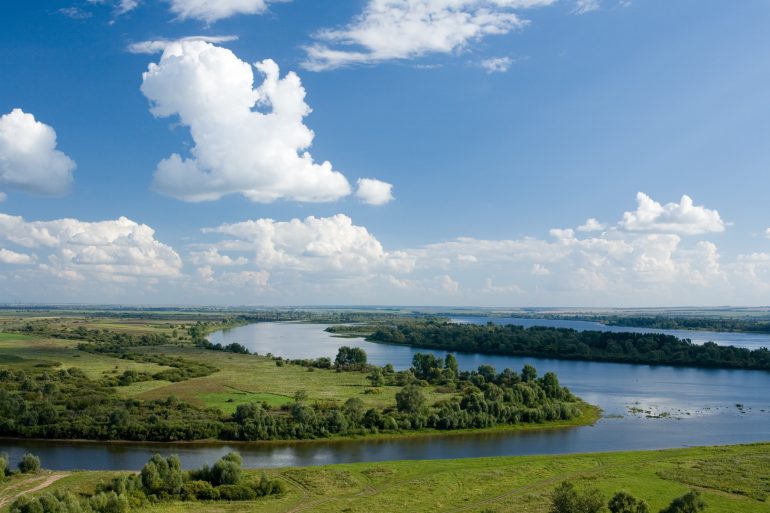
The beautiful river Volga (Photo: Shlykoff via Getty Images)
It has been claimed that the Volga is the widest river in Europe, its width said to expand to up to two miles across in some places. However, while length of rivers is widely cited, data as to width is trickier to come by. This is perhaps due to the fact that it can vary so dramatically along the route. Staying with the example of the Volga, it does narrow down to as little as 520 yards in stretches.
The Biggest Rivers in Europe

The Dnieper River ranks among the biggest rivers in Europe (Photo: Artem Hvozdkov via Getty Images)
The biggest rivers in Europe when judging according to basin size are the Volga, Danube, and Dnieper, which together drain one quarter of the continent.
Europe's Longest Rivers
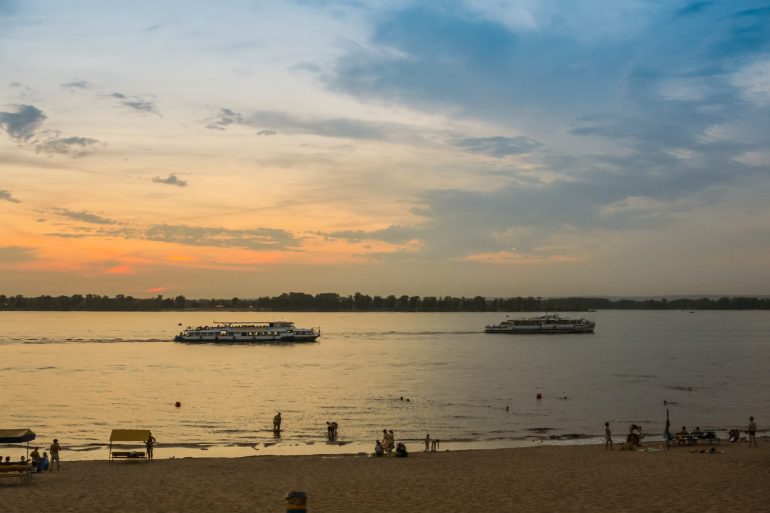
Sunset on the Volga river, the largest river in Europe (Photo: senata via Getty Images)
As we’ve seen, the largest river in Europe is the Volga, with all but one of the longest rivers in Europe spending at least some time in Russia. And what all these rivers share is that they are some of the most hardworking waterways in the world, providing everything from power and irrigation to commercial routes and drinking water. And, of course, vital natural habitats.











